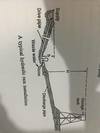JBT Review Mat Flashcards
Minimum DFU and Trap Diameter for:
Water Closet
Private - Re - Kola
Public - Go - Kola
Minimum DFU and Trap Diameter for:
Lavatory
Single - to moon
Set - no move
Minimum DFU and Trap Diameter for:
Bidet
no move
Minimum DFU and Trap Diameter for:
Urinal
Wall Mounted - go lice
Stall - no lice
Trap arm - me lice
Pedestal - go kola
Blowout - go kola
Washdown/Siphon Jet - no lice
Washout (50mm Waste) - no move
Minimum DFU and Trap Diameter for:
Cloth Washers
no Lice
Minimum DFU and Trap Diameter for:
Bathtub
no move
Minimum DFU and Trap Diameter for:
Dental Unit/Cupsidors
to moon
Minimum DFU and Trap Diameter for:
Mobile Home
go kola
Minimum DFU and Trap Diameter for:
Sinks
Kitchen Sink - no move
Bar Sink (Commercial)(50mm waste) - no move
Bar Sink (Private) - to move
Sink (Commercial,Industrial, institutional) (50mm waste) - me move
Sink Clinic - go kola
Service Sink (Slop Sink) - me lice
Minimum DFU and Trap Diameter for:
Drinking Fountain
to moon
Minimum DFU and Trap Diameter for:
Shower Bath
Single - no lice
Gang - 1 unit per head
Minimum DFU and Trap Diameter for:
Floor Drains
no lice
Minimum DFU and Trap Diameter for:
Receptors
Minimum DFU and Trap Diameter for:
Interceptors
Grease/Oil - me lice
Sand/Autowash - go kola
Minimum DFU and Trap Diameter for:
Laundry Tub
No move
Label and Illustrate Table 1 @ Yellow
Size of Roof Leader and Gutter
Label and Illustrate Table 2 @ Yellow
Size of Storm Drain
Label and Illustrate Table 3 @ Violet
Oukum Per Joint
Label and Illustrate Table 4 @ Violet
Lead Per Joint
Label and Illustrate Table 0.00 @ Yellow
Consonant System`
Label and Illustrate Table 5 @ Green
Size of Sanitary Drain
Label and Illustrate Table 6 @ Blue
Vent Sizing
Label and Illustrate Table 7 @ Blue
Table for Air Gap
Label and Illustrate Table 8 @ Blue
Engagement Length for Plastic PIpe






















